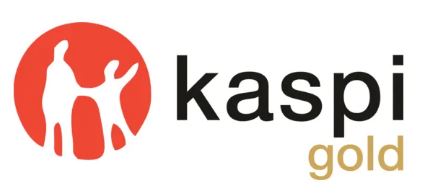Kaspi.kz -NASDAQ:KSPI
Investment Case: KSPI Sector Stock Analysis
Kaspi.kz – NASDAQ: KSPI Delivers Strong Financial Growth and Expands into Turkey
Kaspi.kz, a leading financial technology and e-commerce company in Kazakhstan, has seen impressive growth over the past five years, with a 38.36% increase in revenue and a 43.76% rise in net income. The company’s net income for the trailing twelve months (TTM) stands at $1.96 billion. Kaspi.kz went public in the U.S. in January 2024, becoming the first company from Kazakhstan to do so.
In Q3 2024, Kaspi.kz reported a 28% revenue growth and an 18% increase in net income year-over-year, driven by a 43% growth in its marketplace segment. The company expanded its marketplace in Kazakhstan’s top cities, boosting gross merchandise value by 88% and increasing active customers from 422,000 to 725,000.
Additionally, Kaspi.kz has strategically acquired a 65.41% stake in Hepsiburada, a major Turkish e-commerce platform, with the deal expected to close in Q1 2025. With 26 hedge fund holders, Kaspi.kz is positioned as a highly profitable stock to watch.
Kaspi.kz – NASDAQ:KSPI was recently featured in an insidermonkey.com article highlighting 10 extreamly profitable stocks to buy.
Company Overview:
KSPI is a company based in Kazakhstan that provides payment, marketplace, and fintech solutions to consumers and merchants. Despite operating in a geographically specific market, it has shown significant growth potential, with analysts highlighting its strong balance sheet and future growth opportunities. The stock is currently trading at a notable discount to its estimated fair value, with earnings forecast to grow at 23.74% per year.
Analyst Recommendations and Stock Price Forecast:
Analysts are generally very bullish on KSPI, with a Strong Buy consensus rating and a 12-month price target of $140.25, representing an upside potential of 51.02% from its current price of $92.87. The stock is trading at a significant discount to analysts’ fair value estimates, which provides a compelling buying opportunity.
Financial Metrics and Valuation Analysis:
Valuation Metrics:
PE Ratio (GAAP and Non-GAAP): KSPI’s trailing twelve months (TTM) PE ratio of 8.80 is attractive, signaling the stock is undervalued relative to its earnings. The forward PE of 8.97 further indicates that the market expects similar valuations in the near term. Both ratios are considerably lower than the sector median and suggest a good value proposition for long-term investors, especially compared to peers.
PEG Ratio: The PEG ratio for KSPI stands at a very low 0.36, indicating that the company is undervalued relative to its expected earnings growth. A PEG ratio below 1 generally signifies a stock is trading at a discount to its growth prospects, which could be highly attractive to growth investors.
Price-to-Book (PB) Ratio: At 6.33 (TTM), KSPI’s PB ratio is significantly higher than the sector median of 1.26, which might suggest that the stock is priced at a premium relative to its book value. However, this could also reflect investor confidence in the company’s intangible assets or growth prospects.
Price-to-Sales (PS) Ratio: KSPI’s PS ratio is 3.57 (TTM), indicating it is trading at a moderate premium to its revenue base, with a slight increase forecasted for the future (FWD PS ratio of 3.77). Given its strong growth trajectory, this premium could be justified by expectations of future revenue acceleration.
EV/Sales and EV/EBITDA: With an EV/Sales ratio of 3.43 (TTM) and EV/EBITDA ratio of 4.49, KSPI trades at attractive multiples relative to the sector’s averages, which are significantly higher. This suggests the company is relatively undervalued compared to its enterprise value and earnings before interest, taxes, depreciation, and amortization (EBITDA), offering a compelling entry point for investors.
Profitability and Efficiency Ratios:
Return on Equity (ROE): An impressive ROE of 82.89% signals exceptional profitability and indicates that the company is very efficient in generating profits relative to shareholders’ equity. This high return is one of the key strengths of KSPI.
Return on Assets (ROA): At 16.27%, KSPI demonstrates efficient use of its assets to generate profits, which is a positive sign for investors looking for high operational efficiency.
Return on Capital (ROIC): The company achieves a remarkable ROIC of 82.26%, suggesting that it is very effective at generating value from its capital investments, reinforcing the strong overall profitability.
Growth and Cash Flow:
Earnings Growth: KSPI has achieved an impressive 24% earnings growth over the past year, and analysts forecast earnings to continue growing by 23.74% per year. This growth rate is highly favorable, particularly in comparison to the broader sector, and indicates significant potential upside for investors.
Free Cash Flow (FCF) Yield: The FCF yield stands at 7.05%, indicating the company is generating solid free cash flow, though slightly lower than the sector median of 13.27%. This level of free cash flow generation is healthy but investors should remain cautious regarding the company’s ability to sustain its dividend yield in the long term, as it is not fully covered by free cash flows.
Dividend Yield and Payout Ratio: KSPI currently offers an attractive dividend yield of 7.93%, which is higher than the sector median of 2.96%. However, the payout ratio of 69.82% suggests that a significant portion of earnings is being returned to shareholders. While the high yield is appealing, the coverage by free cash flow is weak, which could pose risks to dividend sustainability in the future.
Debt and Liquidity:
Debt/Equity Ratio: KSPI maintains a very low debt/equity ratio of 0.12, suggesting that it has a conservative capital structure and is not heavily reliant on debt to finance its operations. This low leverage reduces financial risk and indicates that the company is in a strong position to weather economic downturns.
Debt/EBITDA and Debt/FCF Ratios: Both ratios are also low (0.09 and 0.24, respectively), further indicating that KSPI can easily service its debt and free cash flow generation. This further supports the company’s stable financial position.
Liquidity Ratios:
Quick Ratio and Current Ratio: With a quick ratio of 5.66 and a current ratio of 5.71, KSPI demonstrates very strong liquidity, signaling that it can easily meet short-term liabilities. This robust liquidity also reflects the company’s solid financial health.
Risk Analysis:
Non-Cash Earnings: A potential risk for KSPI is its high level of non-cash earnings, which could lead to discrepancies between reported profits and actual cash flows. Investors should monitor the sustainability of these earnings.
Dividend Sustainability: Although the high dividend yield is attractive, the fact that it is not well covered by free cash flow could raise concerns over its long-term sustainability. The company may need to adjust its dividend policy if free cash flow generation slows down.
Conclusion:
NASDAQ:KSPI represents a highly attractive investment opportunity in the semiconductor and fintech sectors. The company’s strong fundamentals, including high returns on equity and capital, solid growth prospects, low debt levels, and impressive profitability, make it a standout in its sector. While the stock does come with some risks, particularly related to its non-cash earnings and dividend sustainability, the significant upside potential, coupled with a low PE ratio and strong earnings growth forecast, positions KSPI as a compelling growth investment at a favorable valuation.
Investors seeking exposure to the fintech and semiconductor space in Kazakhstan should consider KSPI as an attractive opportunity for long-term capital appreciation. However, it is advisable to keep an eye on the company’s ability to sustain its dividend payout and manage its free cash flow in the coming quarters.

